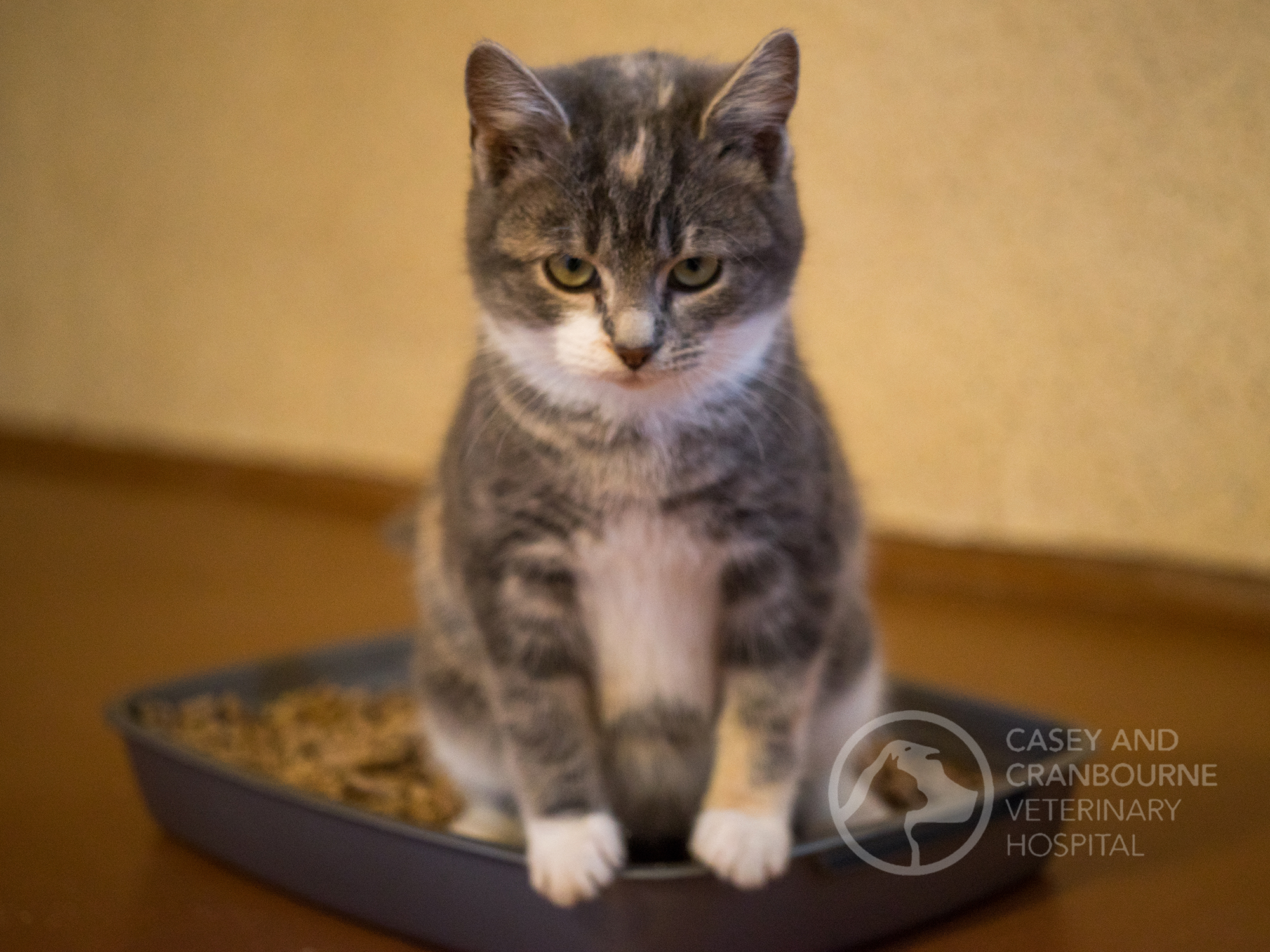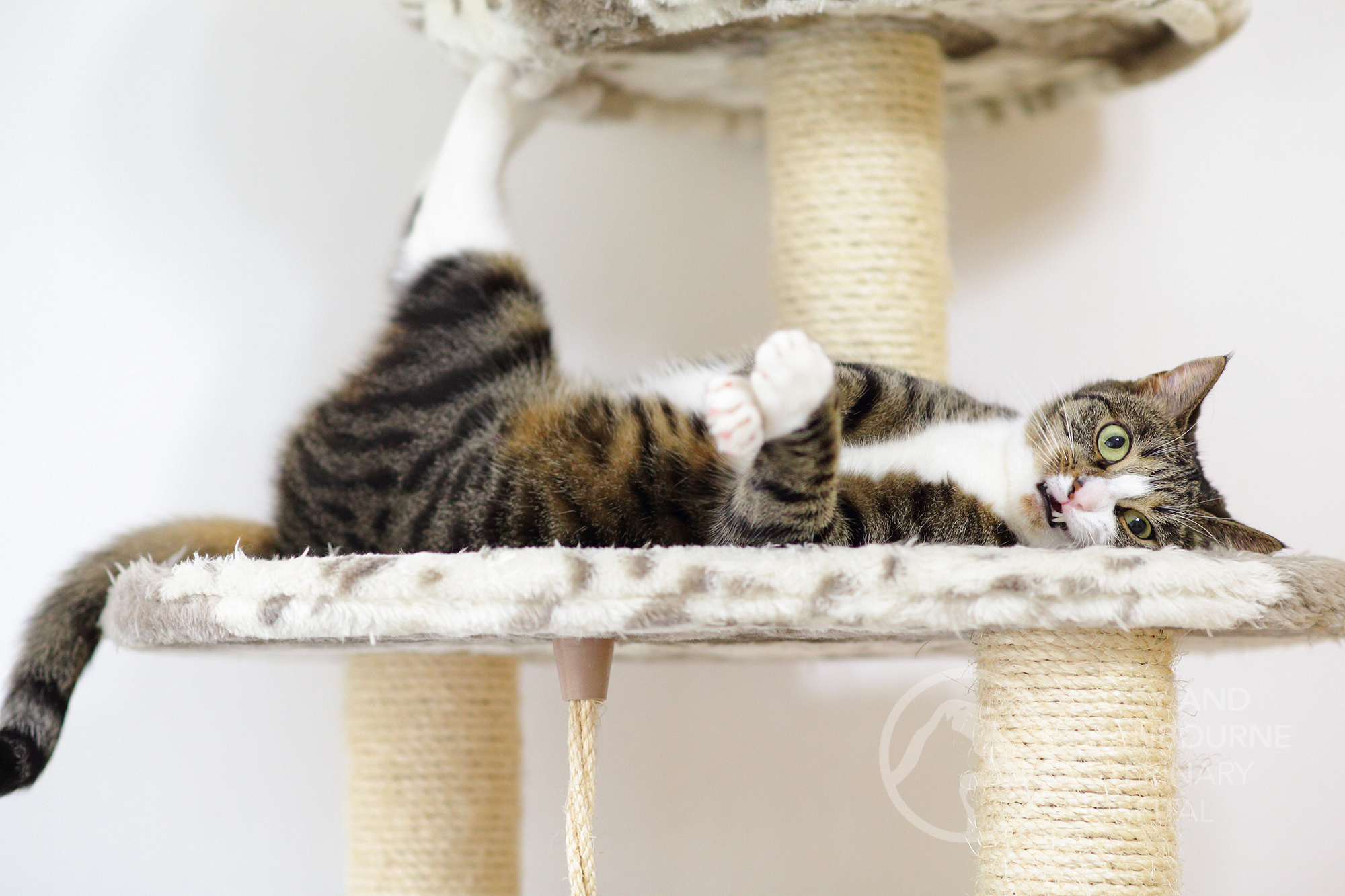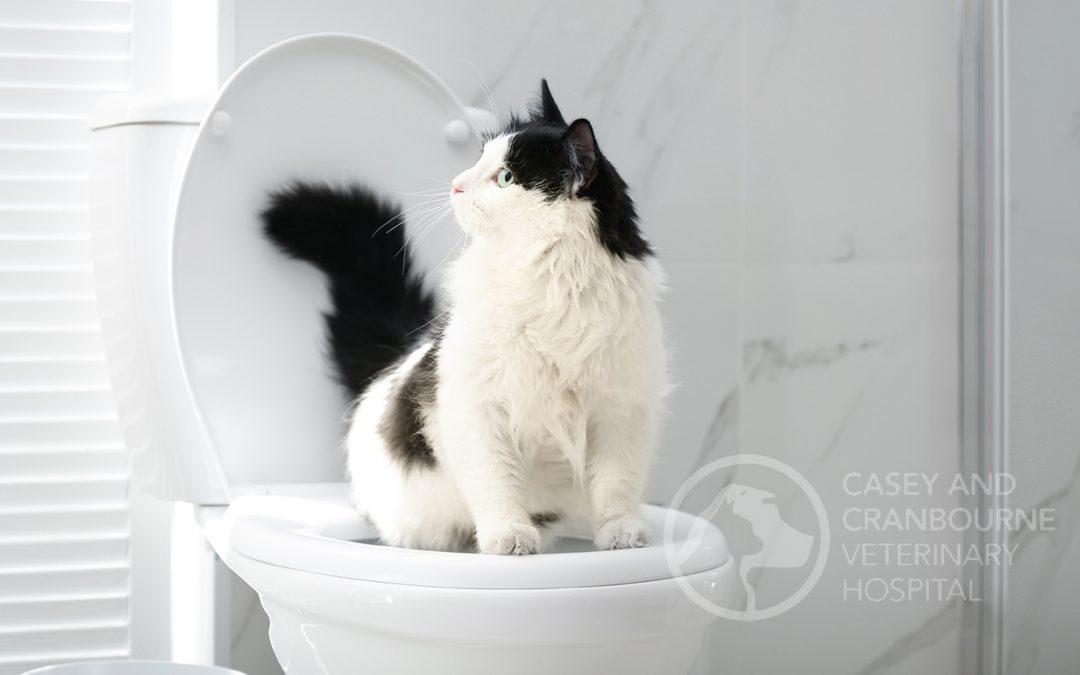Causes, Symptoms & Treatment
Since the start of Covid-19 lockdown, some cats have struggled to adjust to the disruption to households and have become quite stressed with all family members being home for long periods of time. As a result, we have seen an increase in the number of cats presenting to the clinic with urinary issues which may be linked to stress. Some male cats have presented in crisis with complete blockage of their bladder, requiring emergency life saving intervention. This article explains in more detail the causes and signs to look out for in male cats with urethral obstruction.
Urinary blockage is a painful and life-threatening condition that typically affects male cats. If your male cat has urinary blockage, it means their urethra — the tube that drains urine from the bladder to the penis and out of the body — is blocked by inflammatory material. When the urethra is blocked and urine can’t exit the body, the bladder becomes overfilled or “hyperextended”. If the blockage goes on too long, the kidneys may start to swell and become damaged, leaving the bladder to potentially rupture or tear.
Male cat urinary blockage is extremely common, especially among neutered male cats; therefore, it’s critical for pet parents to know the signs of the condition. The sooner a cat receives proper treatment, the more likely they are to have a healthy recovery.
Causes of Male Cat Urinary Blockage
Male cats are especially prone to urinary blockage because they have narrow urethras — so narrow that even involuntary urethral muscle spasms can block the flow of urine. A male cat’s urethra can also become blocked by small urinary stones or by urethral plugs (a mixture of cells that are used to line the bladder, mucus and crystals formed from minerals in the urine). Additional causes of urinary blockage are from feeding foods high in magnesium or the presence of an underlying condition called feline idiopathic cystitis (FIC).
Signs and Diagnosis of Male Cat Urinary Blockage
The most common sign of what vets call a “blocked cat” is going to the litter box to urinate, getting into position and having nothing come out. Your cat may also seem uncomfortable or yowl when trying to urinate. If the blockage continues, your cat will develop an electrolyte imbalance, which can result in a depressed or altered mental state, vomiting and a slow heart rate. They may also hide or avoid human contact.
Diagnosing a male cat with a blocked bladder is primarily based on the clinical history where owners may have noticed their cat straining to urinate but not passing any urine as well as a physical examination where the vet palpates a bladder that is large, hard and painful. A blood test is required to check the kidney function and a urine sediment exam to check for the cause of the blockage. Possibly an abdominal X-ray or ultrasound may be required to look for large bladder stones. If a bladder infection is suspected, a urine sample might need to be submitted to a lab for culture.

Treating Urinary Blockage
If your cat has a complete urinary blockage, they need to be hospitalised immediately for emergency treatment. They are placed on intravenous fluids to correct their electrolyte imbalance and under general anaesthetic, a urinary catheter is placed to relieve the obstruction and empty their bladder. The catheter is then left in place for several days to let the urethra heal and let your cat recover. Most blocked cats are hospitalised for several days.
Once your cat is urinating normally, you’ll be able to take him home. Depending on the cause of the blockage, several medications may be dispensed for your cat. These may include antibiotics, pain medicine and/or medicine to relax the urethra, as well as therapeutic food formulated for urinary health.
Preventing Male Cat Urinary Blockage
Unfortunately, once a male cat has had a urinary blockage, there’s a higher risk of it happening again. There are certain steps that can be taken to minimise these risks.
Firstly, water consumption is an important part of flushing debris from your cat’s system and preventing blockage; try offering them water from a drinking fountain instead of a bowl, flavouring a second water bowl with some tuna juice and switching them to canned food if they currently eat dry food.
Nutrition can also play an important role in preventing blockage. If your cat already experiences urinary health issues, a therapeutic cat food may help dissolve your cat’s crystals or make it less likely they form new ones. Your cat may be prescribed a specific urinary diet when they are discharged from hospital after receiving treatment for a blocked bladder. Prescription urinary diets are available at the clinic and should be fed under the supervision of a vet.
In highly recurrent cases, a urethrostomy may be required. This is a surgery that creates an opening in the urethra above the blockage to allow for normal urine drainage.
The Role of Stress
Another major factor in feline lower urinary tract disease (FLUTD) related conditions is stress, so it is important to consider your cats stress level when evaluating urinary issues. Cats are susceptible to stress-related lower urinary disorders, including cystitis and urethral spasms, which can result in blockage. Reducing a cat’s stress may lower their chance of lower urinary tract diseases, including urethral blockage.
Your cat could be stressed if:
- They’re bored
- The household has too many cats and they have to compete for resources (i.e., alone time at the litter box or competing for food and water)
- Other cats bully them
- Their litter box is dirty
- Changes in the cats environment such as experienced during Covid-19 lockdown
Sometimes, having out-of-town visitors, moving furniture or renovating can stress a cat out as well. If your cat is having issues with urinary blockage, consider whether there’s anything that could be causing them stress, then try to eliminate those stressors. Here are a few tips on how to eliminate stress for your cat:
- Use Feliway plug in diffuser/s around the house. These emit a special scent that replicates the pheromone cats leave naturally when they are feeling comfortable in their environment. The pheromones emitted by the Feliway diffuser are odourless to people and other animals and are proven to reduce stress in cats.
- Provide your cat with plenty of toys to engage them.
- Make sure to keep at least one more litter box in the home than you have cats, so they can have some privacy to do their business. Make sure to separate these litter boxes throughout the house. Also, be sure to clean the litter boxes daily.
- Also, make sure to have one bowl per cat. Think about it: do you want to share a plate with someone else?
- Provide your cat with a cat perch or condo. Cat’s love to be up high where they can see things and it gives them the privacy they want.
- Finally, speak to the staff at the clinic about certain therapeutic diets that are formulated to manage stress response in cats, some are able to be used in multi cat households and fed to all cats.
Although urethral blockage is common among neutered male cats, it doesn’t have to be a problem for your beloved feline friend. Call the clinic if you have any concerns regarding your cats toileting habits. In the case of male cats at risk of developing urethral blockage, prevention is always better than cure.




